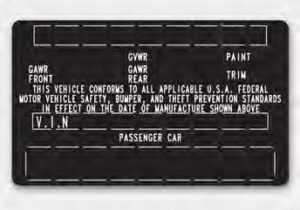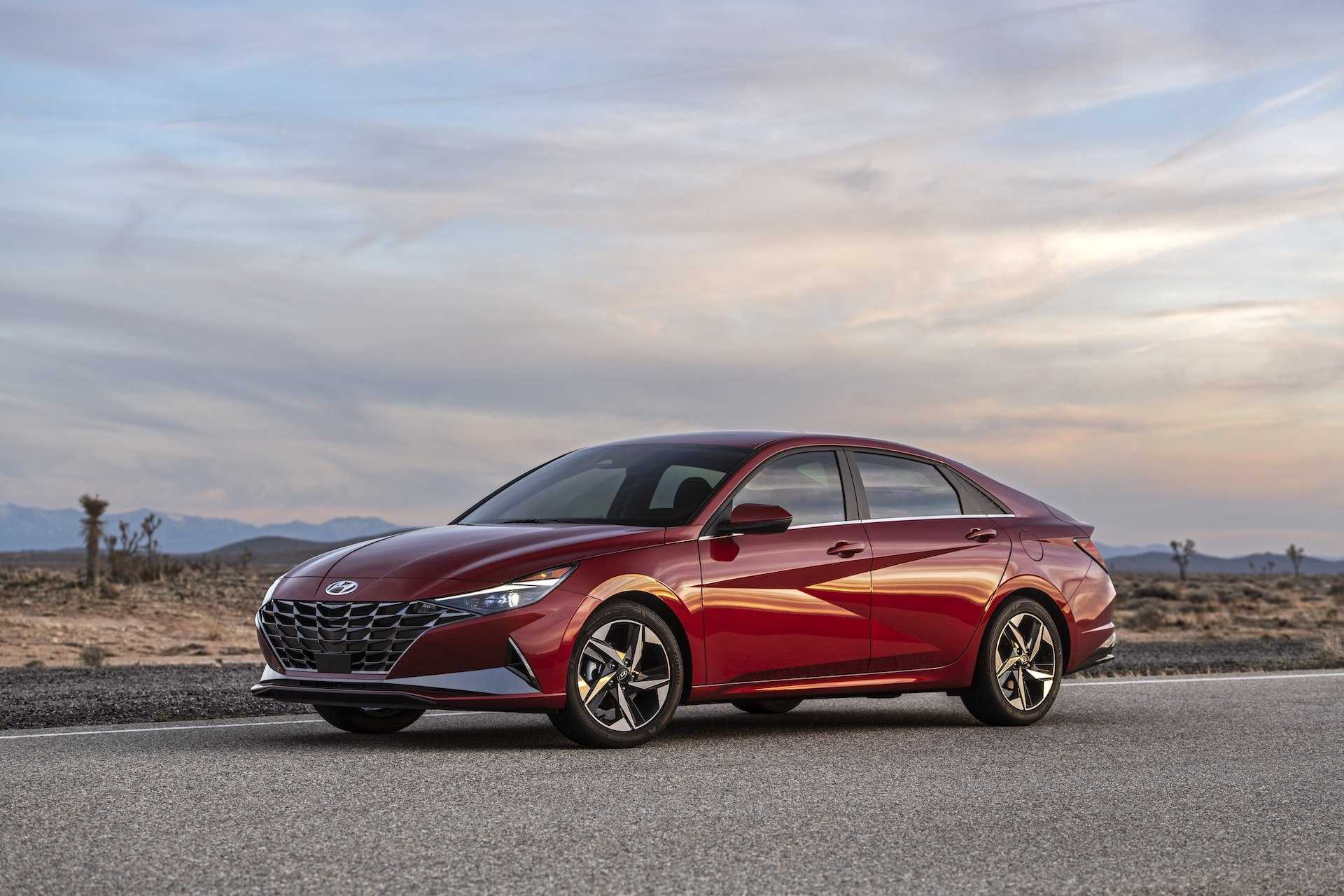Hyundai Elantra 2023 Winter Driving, Vehicle Load Limit
The 2023 Hyundai Elantra Winter Driving and Vehicle Load Limit Guidelines are here to help you safely navigate the difficulties of winter driving while maintaining the performance and safety of your car. This in-depth guide is intended to provide you with the information and tactics you need to successfully navigate ice and snowy conditions as you set out on your journey with this cutting-edge sedan. We offer advice on how to drive safely in bad weather and preserve the integrity of your car, from winterizing your Elantra for peak performance to knowing the weight limits of the car. Every winter journey in your 2023 Elantra will be safe, informed, and ready for everything Mother Nature throws at you because to Hyundai’s unwavering dedication to your safety and driving confidence.
2023 Hyundai Elantra Specs, Price, Features, Milage (Brochure)
Winter Driving
The severe weather conditions of winter quickly wear out tires and cause other problems. To minimize winter driving problems, you should take the following suggestions:
Snow or Icy Conditions
You need to keep a sufficient distance between your vehicle and the vehicle in front of you. Apply the brakes gently. Speeding, rapid acceleration, sudden brake applications, and sharp turns are potentially very hazardous practices. During deceleration, use engine braking to the fullest extent. Sudden brake applications on snowy or icy roads may cause the vehicle to skid. To drive your vehicle in deep snow, it may be necessary to use snow tires or to install tire chains on your tires. Always carry emergency equipment. Some of the items you may want to carry include tire chains, tow straps or chains, a flashlight, emergency flares, sand, a shovel, jumper cables, a window scraper, gloves, ground cloth, coveralls, a blanket, etc.
Snow tires
WARNING
Snow tires should be equivalent in size and type to the vehicle’s standard tires. Otherwise, the safety and handling of your vehicle may be adversely affected. If you mount snow tires on your vehicle, make sure to use radial tires of the same size and load range as the original tires. Mount snow tires on all four wheels to balance your vehicle’s handling in all weather conditions. The traction provided by snow tires on dry roads may not be as high as your vehicle’s original equipment tires. Check with the tire dealer for maximum speed recommendations.
Information
Do not install studded tires without first checking local, state, and municipal regulations for possible restrictions against their use.
Tire chains
Since the sidewalls of radial tires are thinner than other types of tires, they may be damaged by mounting some types of tire chains on them. Therefore the use of snow tires is preferred over the use of tire chains.
If the road and weather conditions require the use of tire chains, be sure to use tire chains that have been properly selected for the size of tire on your HYUNDAI vehicle.
Be sure to follow the guidelines and installation instructions provided by the tire chain manufacturer.
Damage to your vehicle caused by improper tire chain use is not covered by your vehicle manufacturer’s warranty.
WARNING
The use of tire chains may adversely affect vehicle handling:
- Drive less than 20 mph (30 km/h) or the chain manufacturer’s recommended speed limit, whichever is lower.
- Drive carefully and avoid bumps, holes, sharp turns, and other road hazards, which may cause the vehicle to bounce.
- Avoid sharp turns or locked wheel braking.
CAUTION
If your vehicle has 235/40R18 size tires, do not use tire chains; they can damage your vehicle (wheel, suspension, and body).
Information
- Install tire chains on both left and right front tires. It should be noted that installing tire chains on the tires will provide a greater driving force, but will not prevent side skids.
- Do not install studded tires without first checking local, state, and municipal regulations for possible restrictions against their use.
Chain installation
When installing tire chains, follow the manufacturer’s instructions and mount them as tightly as possible. Drive slowly
(less than 20 mph (30 km/h)) with chains installed. If you hear the chains contacting the body or chassis, stop and tighten them. If they still make contact, slow down until the noise stops. Remove the tire chains as soon as you begin driving on cleared roads.
When mounting snow chains, park the vehicle on level ground away from traffic. Turn on the vehicle Hazard Warning Flasher and place a triangular emergency warning device behind the vehicle (if available). Always place the vehicle in P (Park), apply the parking brake, and turn off the engine before installing snow chains.
NOTICE
When using tire chains:
- Wrong size chains or improperly installed chains can damage your vehicle’s brake lines, suspension, body, and wheels.
- Use SAE “S” class or wire chains.
- If you hear noise caused by chains contacting the body, retighten the chain to prevent contact with the vehicle body.
- To prevent body damage, retighten the chains after driving 0.3~0.6 miles (0.5~1.0 km).
- Do not use tire chains on vehicles equipped with aluminum wheels. If unavoidable, use a wire-type chain.
- Use wire chains less than 0.59 inch (15mm) wide to prevent damage to the chain’s connection.
Winter Precautions
Use high-quality ethylene glycol coolant
Your vehicle is delivered with high-quality ethylene glycol coolant in the cooling system. It is the only type of coolant that should be used because it helps prevent corrosion in the cooling system, lubricates the water pump, and prevents freezing. Be sure to replace or replenish your coolant in accordance with the maintenance schedule in Chapter 8. Before winter, have your coolant tested to ensure that its freezing point is sufficient for the temperatures anticipated during the winter.
Change to “winter weight” oil if necessary
In some climates, it is recommended that a lower viscosity “winter weight” oil be used during cold weather. See Chapter 8 for recommendations. If you aren’t sure what weight oil you should use, consult an authorized HYUNDAI dealer.
Check battery and cables
Winter puts additional burdens on the battery system. Visually inspect the battery and cables as described in Chapter 8. The level of charge in your battery can be checked by an authorized HYUNDAI dealer or a service station.
Check spark plugs and ignition system
Inspect your spark plugs as described in Chapter 8 and replace them if necessary. Also check all ignition wiring and components to be sure they are not cracked, worn, or damaged in any way.
Use approved window washer anti-freeze in the system
To keep the water in the window washer system from freezing, add an approved window washer anti-freeze solution in accordance with the instructions on the container.
Window washer anti-freeze is available from an authorized HYUNDAI dealer and most auto parts outlets. Do not
use engine coolant or other types of antifreeze as these may damage the paint finish.
Do not let your parking brake freeze
Under some conditions, your parking brake can freeze in the engaged position. This is most likely to happen when there is an accumulation of snow or
ice around or near the rear brakes or
if the brakes are wet. If there is a risk the parking brake may freeze, apply
it only temporarily while you put the gear selector lever in P and block the rear wheels so the car cannot roll. Then release the parking brake.
Do not let ice and snow accumulate underneath
Under some conditions, snow and ice can build up under the fenders and interfere with the steering. When driving in severe winter conditions where this may happen, you should periodically check underneath the car to be sure the movement of the front wheels and the steering components is not obstructed.
Don’t place foreign objects or materials in the engine compartment
Placement of foreign objects or materials that prevent cooling of the engine, in the engine compartment, may cause a failure or combustion. The manufacturer is not responsible for the damage caused by such placement.
To keep locks from freezing
To keep the locks from freezing, squirt an approved de-icer fluid or glycerine into the key opening. If a lock is covered with ice, squirt it with an approved de-icing fluid to remove the ice. If the lock is frozen internally, you may be able to thaw it out by using a heated key. Handle the heated key with care to avoid injury.
Drive your vehicle when water vapor condenses and accumulates inside the exhaust pipes
When the vehicle is stopped for a
long time in winter while the engine is running, water vapor may condense and accumulate inside the exhaust pipes. Water in the exhaust pipes may cause noise, etc., but it is drained driving at medium to high speed.
2023 Hyundai Elantra Specs, Price, Features, Milage (Brochure)
VEHICLE LOAD LIMIT
Two labels on your driver’s door sill show how much weight your vehicle was designed to carry: the Tire and Loading Information Label and the Certification Label.
Before loading your vehicle, familiarize yourself with the following terms for determining your vehicle’s weight ratings, from the vehicle’s specifications and the Certification Label:
Base Curb Weight
This is the weight of the vehicle including a full tank of fuel and all standard equipment. It does not include passengers, cargo, or optional equipment.
Vehicle Curb Weight
This is the weight of your new vehicle when you pick it up from your dealer plus any aftermarket equipment.
Cargo Weight
This figure includes all weight added to the Base Curb Weight, including cargo and optional equipment.
GAW (Gross Axle Weight)
This is the total weight placed on each axle (front and rear) – including vehicle curb weight and all payload.
GAWR (Gross Axle Weight Rating)
This is the maximum allowable weight that can be carried by a single axle (front or rear). These numbers are shown on the Certification Label. The total load on each axle must never exceed its GAWR.
GVW (Gross Vehicle Weight)
This is the Base Curb Weight plus actual Cargo Weight plus passengers.
GVWR (Gross Vehicle Weight Rating)
This is the maximum allowable weight of the fully loaded vehicle (including all options, equipment, passengers, and cargo). The GVWR is shown on the Certification Label located on the driver’s door sill.
Tire Loading Information Label

The label located on the driver’s door sill gives the original tire size, cold
tire pressures recommended for your vehicle, the number of people that can be in your vehicle, and vehicle capacity weight.
Vehicle capacity weight 849 lbs. (385 kg)
Vehicle capacity weight is the maximum combined weight of occupants and cargo. If your vehicle is equipped with a trailer, the combined weight includes the tongue load.
Seating capacity
Total: 5 persons
- (Front seat: 2 persons,
- Rear seat : 3 persons)
Seating capacity is the maximum number of occupants including a driver, your vehicle may carry. However, the seating capacity may be reduced based upon the weight of all of the occupants, and the weight of the cargo being carried or towed. Do not overload the vehicle as there is a limit to the total weight, or load limit including occupants and cargo, the vehicle can carry.
Towing capacity
Do not use this vehicle for trailer towing.
Cargo capacity
The cargo capacity of your vehicle will increase or decrease depending on the weight and the number of occupants and the tongue load if your vehicle is equipped with a trailer.
Steps for determining the correct load limit
- Locate the statement “The combined weight of occupants and cargo should never exceed XXX kg or XXX lbs.” on your vehicle’s placard.
- Determine the combined weight of the driver and passengers that will be riding in your vehicle.
- Subtract the combined weight of the driver and passengers from XXX kg or XXX lbs.
- The resulting figure equals the available amount of cargo and luggage load capacity. For example, if the “XXX” amount equals 1400
lbs. and there will be five 150 lb. passengers in your vehicle, the amount of available cargo and luggage load capacity is 650 lbs.
(1400 – 750 (5 x 150) = 650 lbs.) - Determine the combined weight of luggage and cargo being loaded on the vehicle. That weight may not safely exceed the available cargo and luggage load capacity calculated in Step 4.
- If your vehicle will be towing a trailer, the load from your trailer will be transferred to your vehicle. Consult this manual to determine how this reduces the available cargo and luggage load capacity of your vehicle.
WARNING
Do not overload the vehicle as there is a limit to the total weight, or load limit, including occupants and cargo, the vehicle can carry. Overloading can shorten the life of the vehicle. If the GVWR or the GAWR is exceeded, parts on the vehicle can be broken, and it can change the handling of your vehicle. These could cause you to lose control and result in an accident.

Certification label

The certification label is located on the driver’s door sill at the center pillar and shows the maximum allowable weight of the fully-loaded vehicle. This is called the GVWR (Gross Vehicle Weight Rating). The GVWR includes the weight of the vehicle, all occupants, fuel, and cargo.
This label also tells you the maximum weight that can be supported by the front and rear axles, called Gross Axle Weight Rating (GAWR).
The total weight of the vehicle, including all occupants, accessories, cargo, and trailer tongue load must not exceed the Gross Vehicle Weight Rating (GVWR) or the Gross Axle Weight Rating (GAWR). To find out the actual loads on your front and rear axles, you need to go to a weigh station and weigh your vehicle. Be sure to spread out your load equally on both sides of the centerline.
WARNING
Overloading
- Never exceed the GVWR for your vehicle, the GAWR for either the front or rear axle and the vehicle capacity weight. Exceeding these ratings can affect your vehicle’s handling and braking ability, and cause an accident.
- Do not overload your vehicle. Overloading your vehicle can cause heat buildup in your vehicle’s tires and possible tire failure, increased stopping distances, and poor vehicle handling of which may result in a crash.
NOTICE
Overloading your vehicle may cause damage. Repairs would not be covered by your warranty. Do not overload your vehicle.
WARNING
If you carry items inside your vehicle
(for example, suitcases, tools, packages, or anything else), they are moving as fast as the vehicle. If you have to stop or turn quickly, or if there is a crash, the items will keep going and can cause an injury if they strike the driver or a passenger.
- Put items in the cargo area of your vehicle. Try to spread the weight evenly.
- Do not stack items like suitcases inside the vehicle above the tops of the seats.
- Do not leave an unsecured child restraint in your vehicle.
- When you carry something inside the vehicle, secure it.
FAQ
The User Guide may provide recommendations on winterizing your vehicle, including checking tires, fluid levels, and carrying essential supplies.
Some vehicles may offer winter driving modes or features like traction control. The User Guide may explain these options.
The User Guide may offer tips and best practices for safe driving in winter conditions, including braking and steering techniques.
The User Guide may provide information on the use of snow chains or winter tires for improved traction in snowy or icy conditions.
The User Guide should specify the maximum weight the vehicle can safely carry, including passengers and cargo.
The User Guide may explain how to calculate and verify the load limit by considering the weight of passengers and cargo.
If your Elantra has roof racks, the User Guide may provide information on weight and storage restrictions for roof-mounted cargo.
The User Guide should outline the vehicle’s towing capacity and provide guidelines for safe towing practices.
The User Guide may explain how heavy loads can impact vehicle handling and stability on snowy or icy roads.
The User Guide may provide specific precautions for driving in winter conditions with a fully loaded vehicle.
The User Guide may offer guidance on winter maintenance tasks, such as checking and maintaining the battery, antifreeze, and wiper blades.
If you have winter tires, the User Guide may provide information on proper storage to extend their lifespan.
The User Guide may suggest a list of essential safety equipment and supplies for winter driving emergencies.
The User Guide may explain how to optimize the vehicle’s safety features, such as anti-lock brakes and stability control, for winter driving.
The User Guide may provide step-by-step instructions for safely getting unstuck in snowy or icy conditions.
Useful Link
View Full User Guide: Hyundai Elantra 2023 User Guide
Download Manuals: https://owners.hyundaiusa.com/us/en/resources/manuals-warranties.html
2023 Hyundai Elantra Specs, Price, Features, Milage (Brochure)


